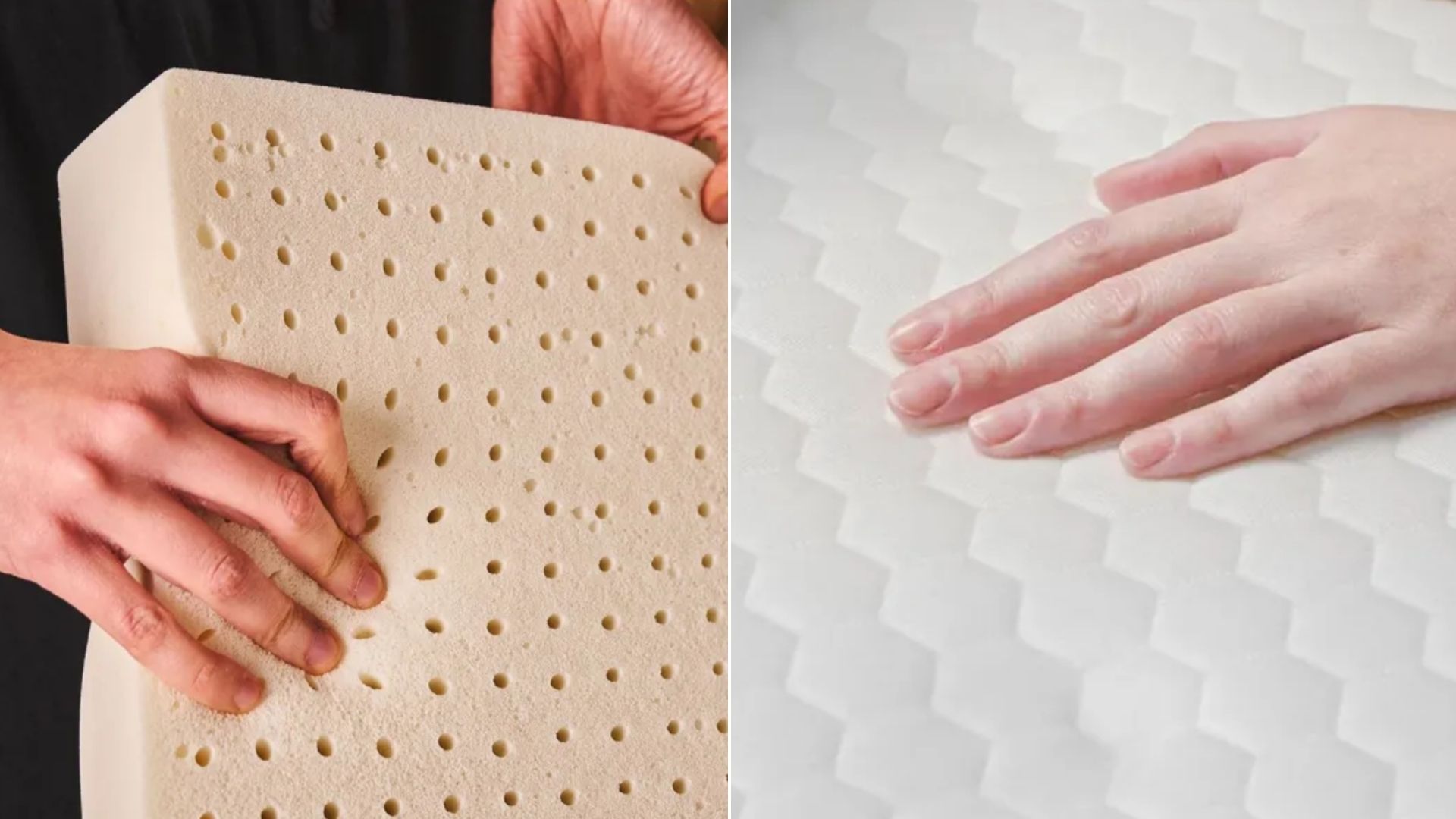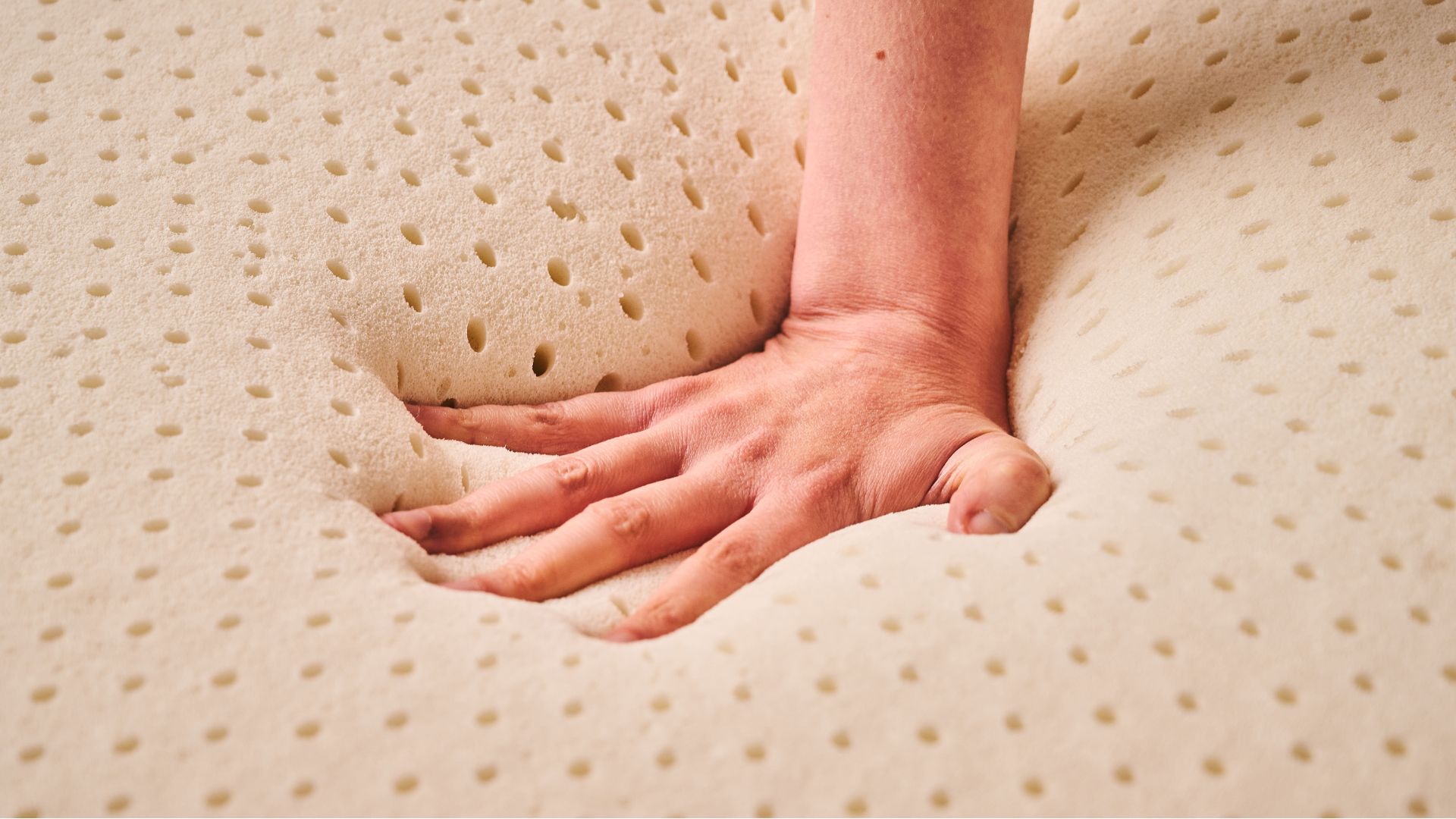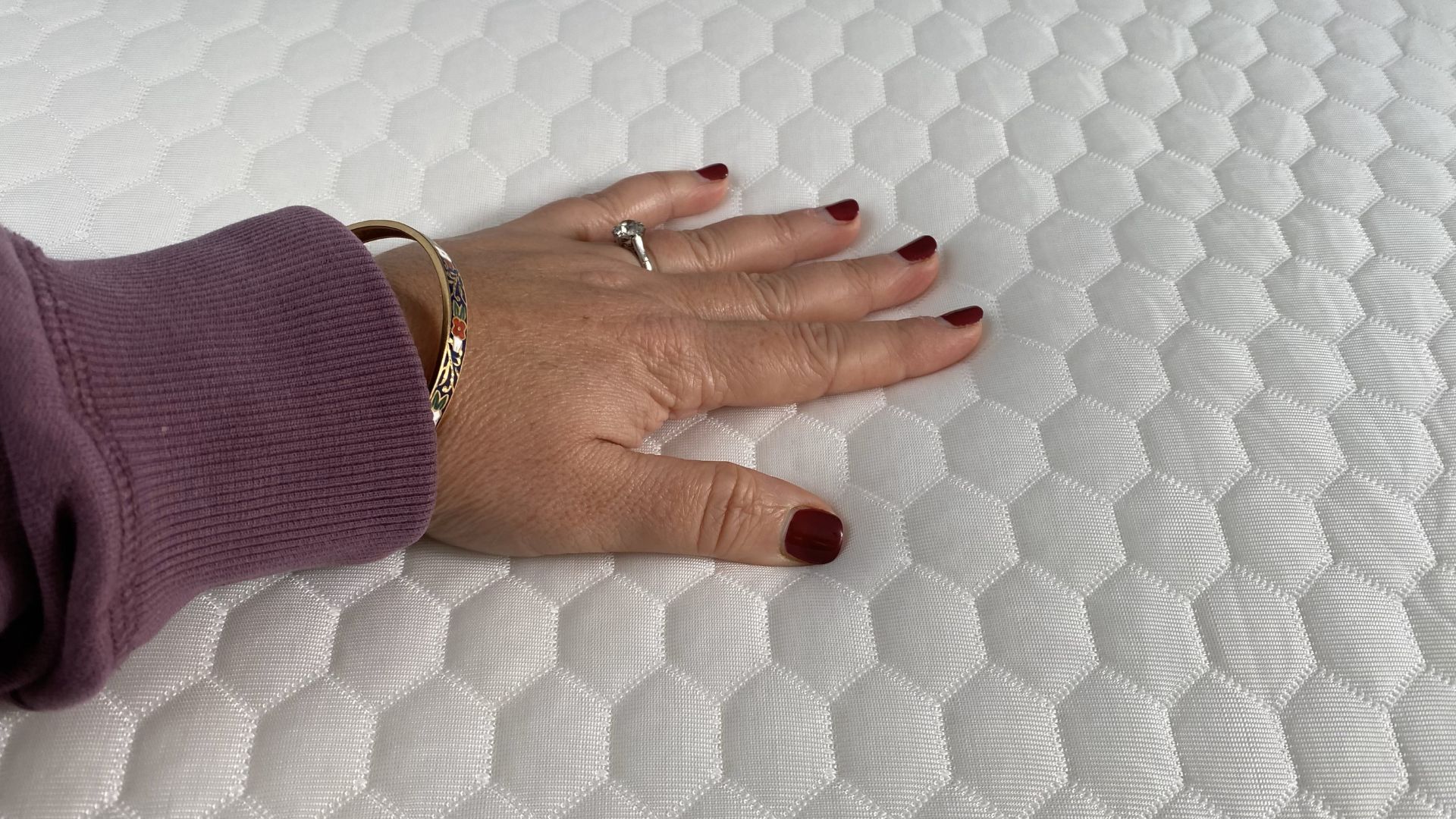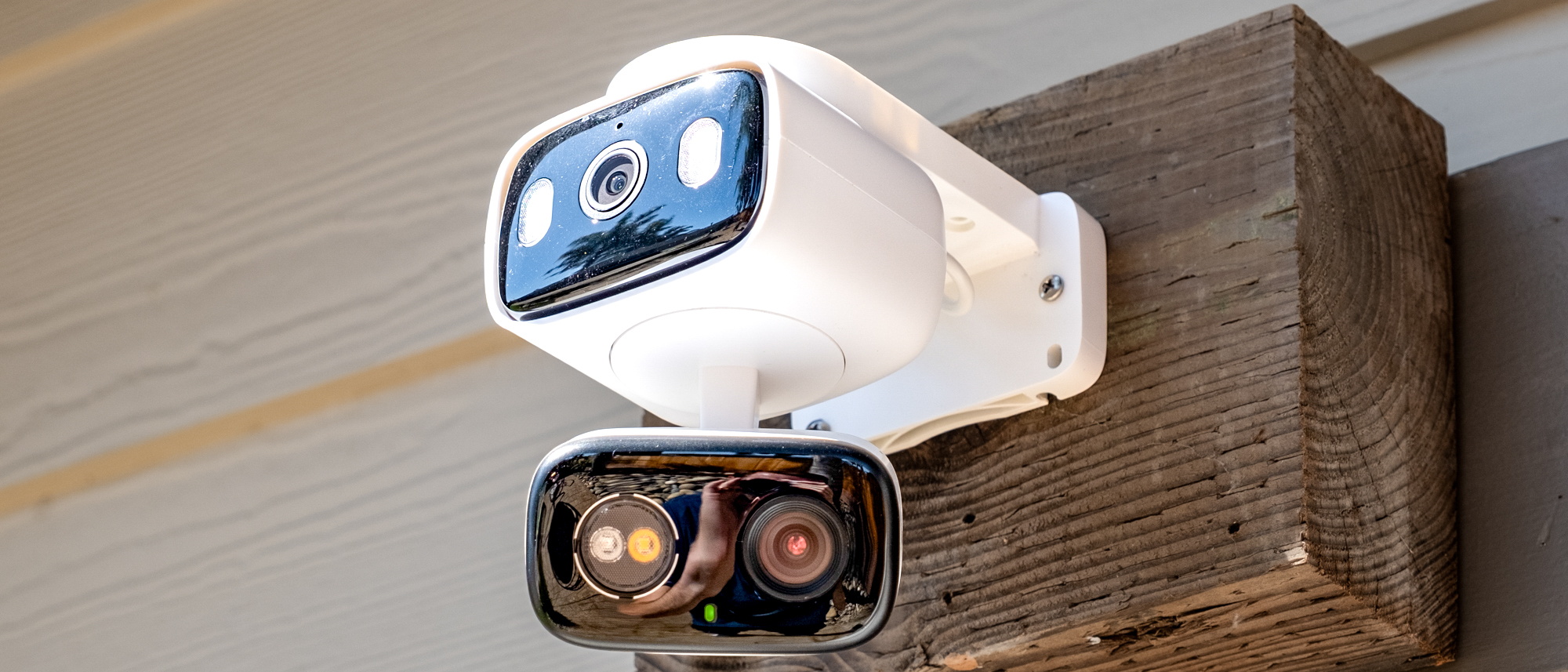Man-made GlacioTex vs natural latex: which is the more effective cooling mattress material?
Both latex and GlacioTex can add cooling features to your mattress, but which is right for you?

GlacioTex and latex are both used in cooling beds to assist temperature regulation. If you're deep into researching which of this year's best cooling mattresses to buy, you've likely come across various celestial-sounding materials including these two.
Luckily, we're here to help you understand what these materials are and what they bring to your sleep health. It is literally my and my team of mattress testers' job to shift through mattress jargon and marketing waffle to help you find the best mattress for you and your sleep needs, and snap up the best deal in monthly mattress sales.
Here we're zooming in on latex and GlacioTex, pitting them against one another in terms of price, design, feel and temperature control to help you decide which luxury mattress material is worth the splurge.
What is GlacioTex?
GlacioTex is a man-made fabric composed of fibers with high thermal conductivity. Usually sewn into mattress covers, these fibers are able to pull heat away from the mattress surface and, therefore, your body while you sleep.
It is also hypoallergenic and waterproof, providing a defense against spills, dust mites and bacteria building up in your bed.
While nobody has patented latex, brands under the 3Z umbrella (we're talking Helix, Brooklyn Bedding and Nolah) commonly use GlacioTex in their mattress covers.
What is natural latex?
While there are two types of latex foams (natural and synthetic), it is the natural form we are focusing on here. Natural latex is a foam derived from sap from rubber trees and manufactured into an open-cell foam.
Get instant access to breaking news, the hottest reviews, great deals and helpful tips.
The sap is extracted from the tree, mixed with non-toxic materials, whipped until frothed, and then set into a foam. The next step determines whether the natural latex will be Dunlop or Talalay latex.
With Dunlop latex, the froth is poured into a mold all the way to the top, then baked, removed from the mold, washed and then baked again. With Talalay, it only partially fills the mold, which is then vacuum-sealed so the liquid expands. Then it's frozen, baked, washed and dried.

The result? Talalay has a softer, spongier feel offering the sleeper more cushioning. On the other hand, Dunlop is denser and firmer, providing a more responsive, robust surface.
Latex can be found in most of the best organic mattresses and in luxury mattresses like the Birch Luxe Natural mattress and Saatva Latex Hybrid mattress.
GlacioTex vs Latex: Key differences
From the manufacturing process to how they feel when you sleep on them, these materials have several differences, which we will explore here…
Cooling properties
Firstly, it is important to note that GlacioTex is actively cooling — it pulls heat away from the body to cool you down. Meanwhile, latex is breathable and temperature regulating, meaning it keeps the bed temperature-neutral.
While memory foams are notorious for trapping heat, latex is porous and the tiny air pockets allow air to circulate freely. This means heat and moisture are able to escape rather than getting sucked into the foam and trapped against your body.
On the other hand, GlacioTex employs high thermal conductivity fibers which transfer heat away from the air and your body. This means GlacioTex fabric remains cool to touch.

Design
GlacioTex fabric is typically a 50/50 blend of polyester and polyethylene with high thermal conductivity fibers sewn into it to form a cool mattress or mattress topper cover. These thermal conductivity fibers are able to dissipate heat through the mattress surface.
On the other hand, latex foams are used in support and cushioning layers of mattresses. With slight discrepancies between Dunlop and Talalay mentioned above, latex is typically a firm, sturdy foam.
Feel
Used in top comfort layers and support cores of a mattress, latex has a much larger effect on the overall comfort of a mattress compared with GlacioTex, which is usually only in the thin mattress cover.
As a spongy material, latex is known to be durable and bouncy. This property makes it ideal for combination sleepers who like to switch between positions during the night. Firmer than memory foam, it contours to your body while providing spinal support.
Meanwhile, our mattress testers have found GlacioTex covers to be slippery in come cases, making it difficult for a fitted sheet to stay put. Besides this minor inconvenience, the GlacioTex doesn't alter the feel of the mattress too much. It simply adds a cool-to-touch surface.

Price
As premium mattress materials, neither GlacioTex or latex come particularly cheap. As a natural material used in many of the best organic mattresses you can buy, latex is pricey due to its natural production process.
GlacioTex is often available in cooling cover upgrades (Helix GlacioTex cover starts from $187 in a queen size at Helix), incurring extra cost. But it is generally cheaper than latex.
GlacioTex vs Latex: which is more effective as a cooling material?
While both GlacioTex and latex can contribute to a cooler sleep experience, as we've explored here, latex is generally considered more effective for temperature regulation.
This is mainly due to the fact that latex's open cell structure allows air to flow throughout the mattress, improving breathability even in deeper layers. Whereas, limited to the mattress cover, GlacioTex primarily focuses on surface-level cooling.
While it can initially feel cool, GlacioTex may not be as effective at dissipating heat trapped within the mattress.
In essence, if you're looking for a material that actively regulates temperature and keeps you cool throughout the night, latex is a better choice. If you're primarily concerned with surface-level cooling and a cool-to-the-touch feel, GlacioTex could be a suitable option, but it's less effective at long-term temperature regulation.

Eve is a sleep tech product tester and writer at Tom's Guide, covering everything from smart beds and sleep trackers, to sleep earbuds and sunrise alarm clocks. Eve is a PPA-accredited journalist with an MA in Magazine Journalism, and has four years’ experience writing features and news. In her role as Sleep Tech Product Tester and Writer for Tom's Guide, Eve is constantly trying out and reviewing the latest sleep products from brands such as Apple, Garmin, Whoop, Hatch, Sleep Number, Eight Sleep, and Oura. A fitness enthusiast who completed the London Marathon earlier this year, Eve loves exploring the relationship between good sleep, overall health, and physical performance, and how great sleep tech can make that relationship even better.
You must confirm your public display name before commenting
Please logout and then login again, you will then be prompted to enter your display name.
